
Canva, the popular online design platform, has revolutionized graphic design, offering tools to over 100 million monthly users who have created more than 15 billion designs. However, operating at this scale comes with challenges—one of the most significant being data storage costs. Canva’s data footprint has grown to over 230 petabytes (PB), hosted on Amazon S3, AWS’s scalable object storage service.
By adopting an innovative storage optimization strategy, Canva managed to reduce their monthly storage costs by $300,000, translating to savings of $3.6 million annually. Let’s dive into how they achieved this, what others can learn, and alternative strategies they could have explored.
Understanding the Storage Challenge
To appreciate Canva’s achievement, it helps to understand the cost structure of AWS S3. The platform offers several storage classes:
- S3 Standard: Designed for frequently accessed data; higher cost per GB.
- S3 Standard-IA (Infrequent Access): Cheaper for data accessed less often.
- S3 Glacier Instant Retrieval: Low-cost storage for infrequently accessed data that still requires fast retrieval.
- S3 Glacier Flexible Retrieval: Archival storage with slower access times.
For Canva, the majority of their data was stored in S3 Standard-IA, costing $0.0125 per GB per month. With 207 PB stored this way, their monthly cost was approximately $2.58 million.
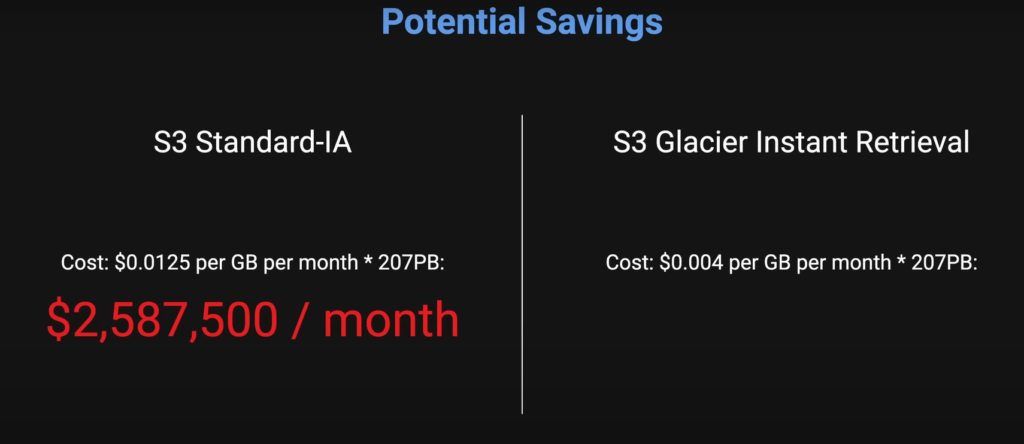
Image credit: Kiki’s Bytes on youtube
Canva’s Optimization Strategy
Through Storage Class Analysis, Canva observed that:
- User-generated content was frequently accessed within the first 15 days of creation.
- After this period, access rates dropped significantly, making much of their data a candidate for cheaper storage options like S3 Glacier Instant Retrieval.
Cost Comparison
For 207 PB of data:
- S3 Standard-IA: $0.0125 per GB = $2,587,500/month.
- S3 Glacier Instant Retrieval: $0.0036 per GB = $745,200/month.
By transitioning this data, Canva projected savings of $1.84 million per month ($22.1 million annually).
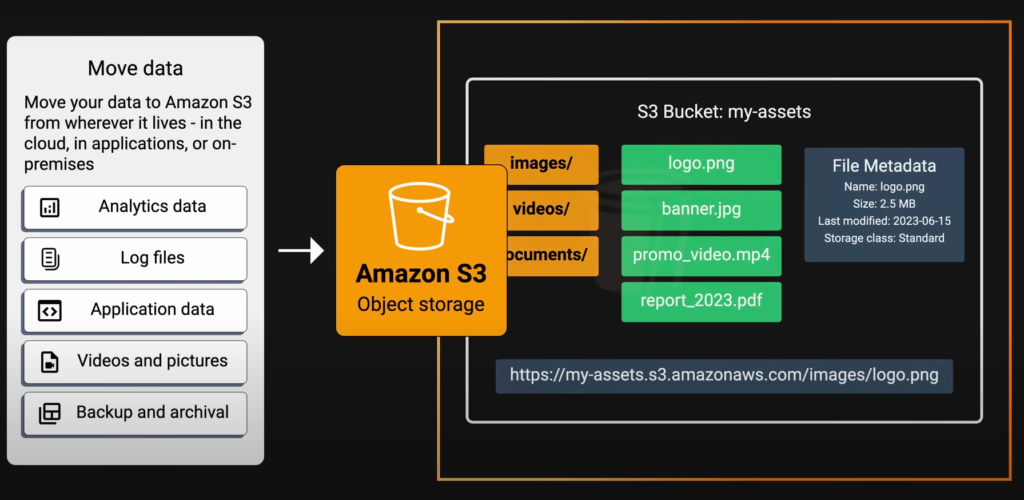
Image credit: Kiki’s Bytes on youtube

Image credit: Kiki’s Bytes on youtube
Transition Costs
Migrating data between storage classes isn’t free. AWS charges $0.02 per 1,000 objects. With over 300 billion objects, Canva’s one-time transition cost exceeded $6 million. To ensure a positive return on investment (ROI):
- They prioritized objects larger than 400KB, as larger objects reached the break-even point faster.
- Smaller objects (~20KB) remained in S3 Standard, where costs were more favorable due to the absence of minimum billable sizes.
Implementation
Canva automated the migration using lifecycle policies on their S3 buckets, enabling efficient transitions. Remarkably, they migrated 80 billion objects (130 PB of data) in just two days, saving $300,000/month post-migration.
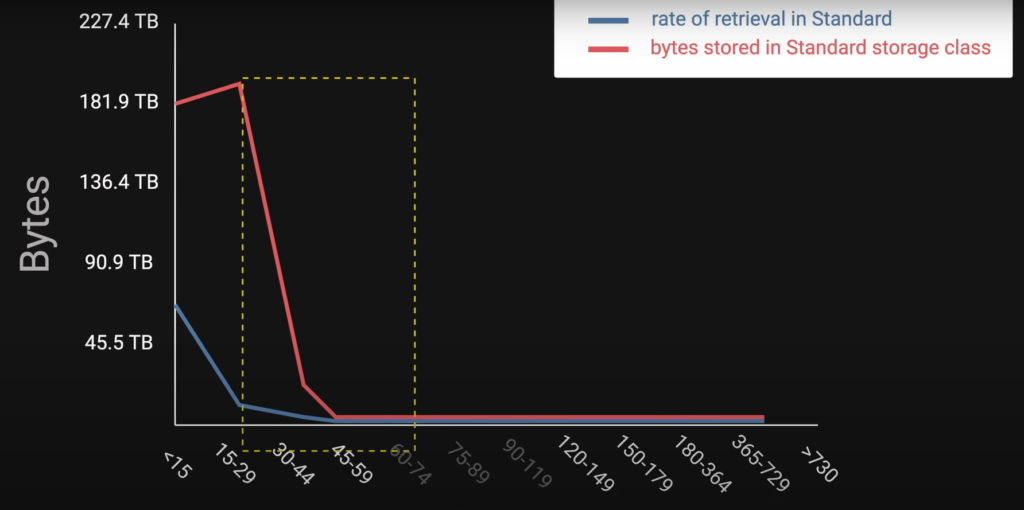
Image credit: Kiki’s Bytes on youtube
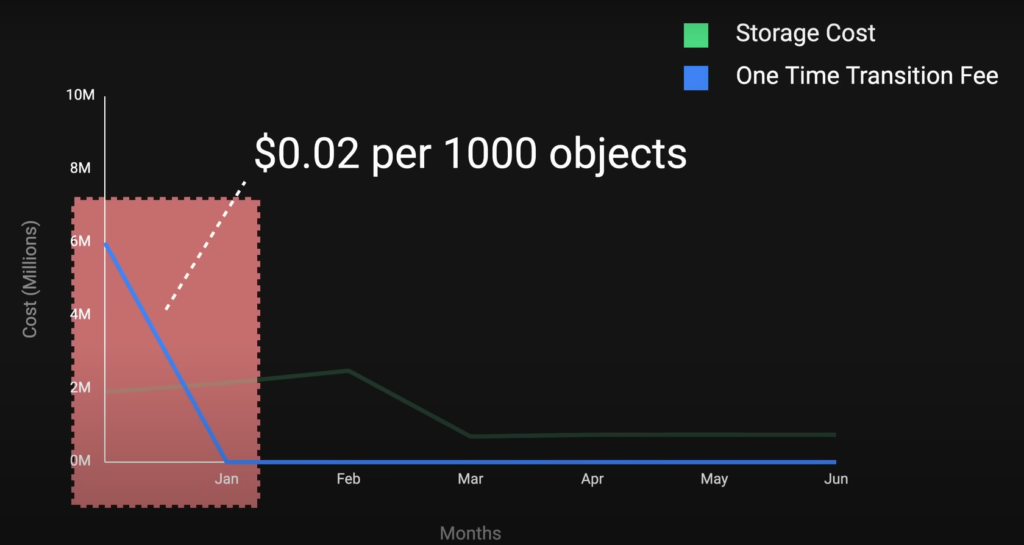
Image credit: Kiki’s Bytes on youtube
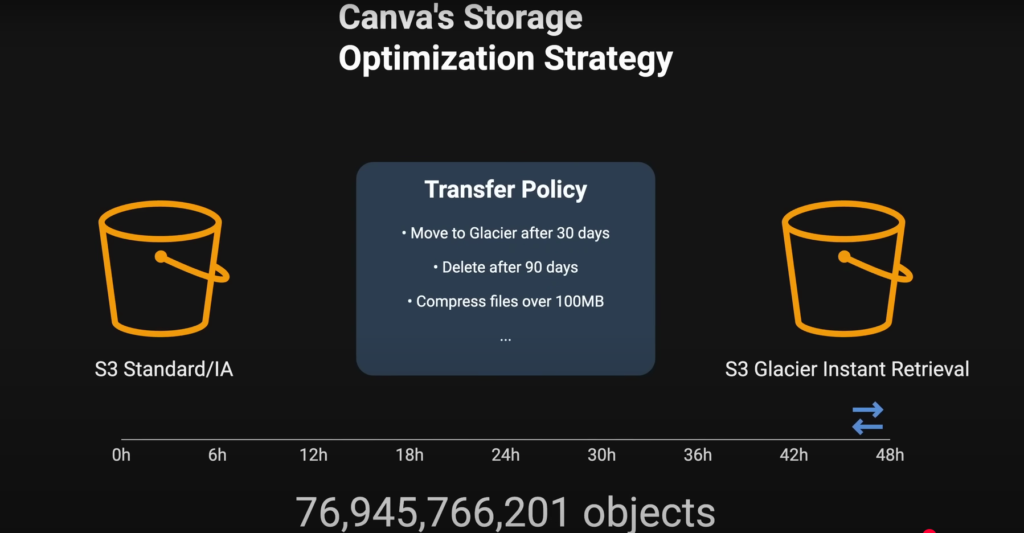
Image credit: Kiki’s Bytes on youtube
What Happens When Optimization Fails?
Not every company successfully optimizes storage costs. Consider a contrasting example: Company X, a SaaS provider, relied on AWS S3 Standard for all their data despite much of it being archival. Their monthly storage costs skyrocketed to $10 million, forcing them to:
- Cut back on innovation budgets.
- Lay off staff to offset operational expenses.
Key mistakes included:
- Lack of Data Analysis: No tools to assess storage access patterns.
- One-Size-Fits-All Approach: Using S3 Standard for everything, including cold data.
- Ignoring Transition Opportunities: Fear of migration costs led to long-term inefficiencies.
Conclusion
Canva’s success in saving millions through AWS S3 optimization underscores the importance of data-driven decision-making. By analyzing storage patterns, they achieved a balance between cost and performance. For organizations managing vast data, the lessons are clear:
- Analyze your data access patterns.
- Choose storage classes based on actual usage.
- Plan migrations strategically to minimize costs.
With cloud costs becoming a growing concern for businesses, Canva’s approach provides a blueprint for effective cost management. Whether using AWS, Azure, or custom solutions, the key is understanding your data’s lifecycle and aligning it with the right tools and strategies.